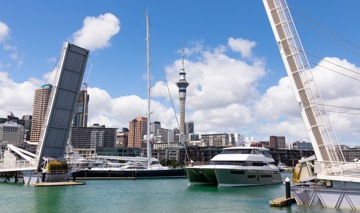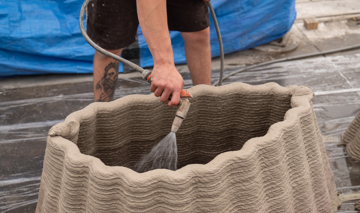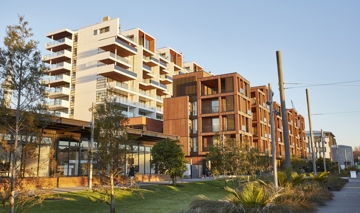Wynyard Point bioremediation works
01 February 2023 - 31 July 2023
- Wynyard Quarter
- In Progress
The past, present and future of Wynyard Point...
Wynyard Point is an area that will be one of the most important regeneration projects in the city over the next 10-20 years.

Plans to regenerate Wynyard Point
Once an area underwater, Wynyard Point was reclaimed using fill material from a former gasworks site. The area has more recently been known as the ‘tank farm’ due to the range of tanks that used to store petrol and liquid chemicals before they were transferred off site. The lease on the various sites were due to expire between 2022-2024, however, in advance of the 36th America’s Cup event, negotiations enabled the businesses to relocate elsewhere earlier than anticipated.
Planning is currently underway to regenerate Wynyard Point into a major urban park surrounded by mixed use development. This is based on the work planned by the legacy urban regeneration agencies since 2005 and is now becoming a reality through the redevelopment lead by Eke Panuku, on behalf of Auckland Council.
However, before any development can take place, bioremediation work needs to be completed by the lessee of the site (Shell Ltd) to remediate the area from the previous uses on the site.
These works will be carried out by a process called bioremediation and will be:
·managed and completed by Shell, in accordance with the approved resource consent conditions,
·monitored by Shell and by Auckland Council Regulatory Services.
Contact details
Monitoring queries and complaints: Auckland Council Regulatory Services 09 301 0101
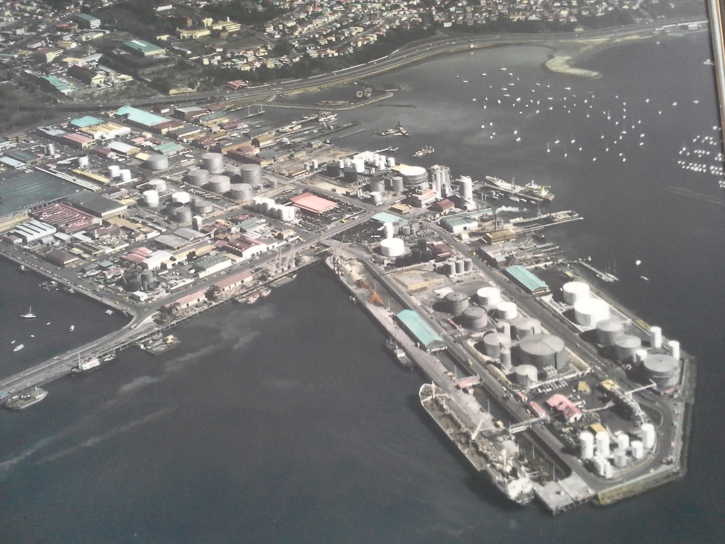
Site contamination
The northern end of Wynyard Point was formerly the Shell Wynyard Wharf facility. This site once homed 53 storage tanks and because of that the land was exposed to materials during the fuel handling processes.
Thorough site investigations have since taken place by Tonkin and Taylor in 2020 and by ERM in 2021 to understand what contaminants are present and where. This work included soil and groundwater sampling and testing across the site via bores and excavations.
The findings of contamination were generally located in the upper one metre of soil and correlated with historical petroleum and chemical storage (hydrocarbons) and reclamation fill sourced from the gasworks site.
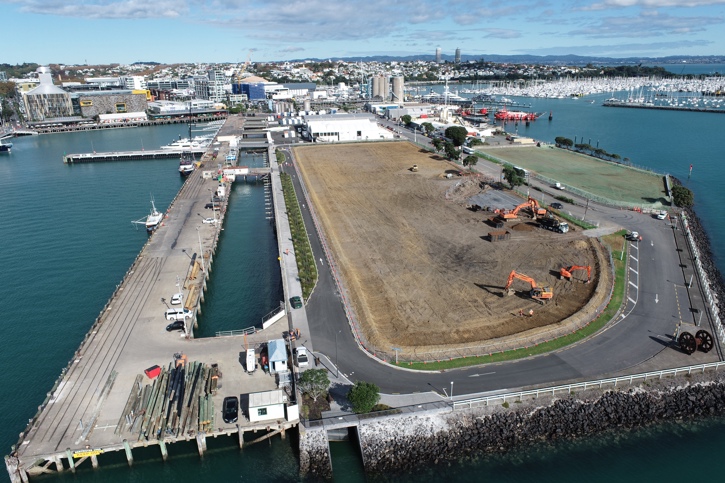
How does the bioremediation process work?
Site bioremediation will take place by contractors appointed by Shell Ltd in accordance with the resource consent that was granted by Auckland Council in August 2022.
Excavated contaminated soil will be sifted, turned and placed in large piles with pipes inserted inside to pump air and amendments in. This active process speeds-up the natural process of breaking down the contaminants (as shown in the image below). The soil is monitored to track progress and once the soil is remediated to the required standard it is then spread back throughout the site.
The methodology selected is the most sustainable method, as it minimises the need for vehicle transport for off-site disposal of impacted soil (except for a small amount of some material needing to be disposed of offsite), and the need to then import a bulk amount of new soil/fill in to replace it.
The bioremediation will be completed in a targeted approach so that there is less disturbance and less risk to the immediate environment. This methodology has the support of all technical experts in this specialist field.
A resource consent for the works was granted by Auckland Council in August 2022 and works will take place from the beginning of October 2022, for up to 9 months.
The works will be monitored by Shell and by Auckland Council Regulatory Services. Once finished, the bioremediation works will complete Shell Ltd.’s obligation of returning the land so that is suitable for future public use.
What to expect during the bioremediation works?
Visually you will first see ground works involving typical soil excavation equipment and then covered mounds of soil (bio-piles) located on site. The perimeter will be fenced off for the duration of the works and only contractors will be permitted on site.
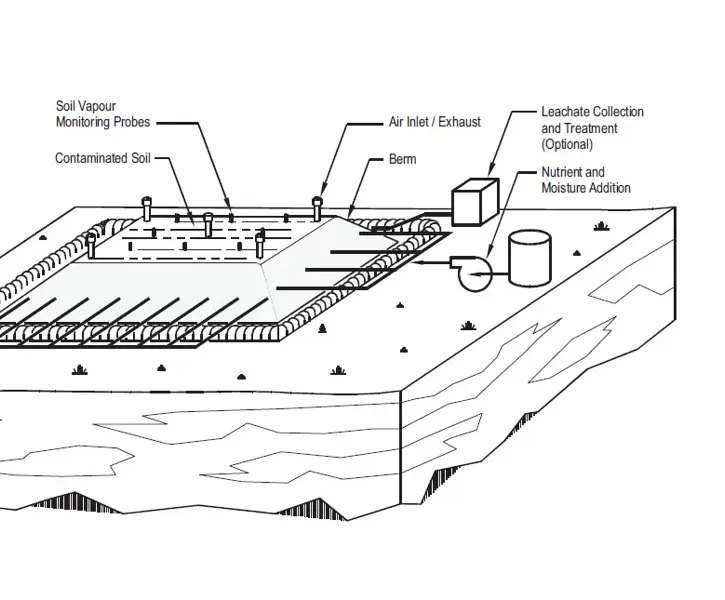
Noise from machinery and loading material on to trucks

Noise producing machinery and equipment will only be operated during working hours as approved by Auckland Council
Machinery and equipment shall be switched off or throttled to a minimum when not in use
Machinery and equipment will use practical and reasonable noise attenuating devices and measures to minimise noise being transmitted from the site.
All equipment and machinery will be properly maintained and operated in an efficient manner to minimise noise.
Dust from the excavation and sorting of soil

Heavy duty plastic sheeting used to cover the bio-pile will be secured using heavy weights, stakes
and tie-downs.
Regular inspections will be conducted to confirm compliance of covering and any deficiencies (such as flapping edges or missing weights/tie-downs) are to be rectified immediately.
Hydrocarbon odours (petrol smell) from soil handling procedures

Space in the northern portion of the site will be utilised.
Keeping the exposure of freshly excavated soil to a minimum between the time it is excavated to when it is placed into the bio-piles and covered
Monitoring wind direction and monitoring of odours at the site boundary when winds are from the west, north-west or north
Reducing or stoppage of excavation activities if both wind and monitoring conditions suggest neighbouring properties are being affected
Having an odour control spray system in place, to be utilised when conditions suggest
A contingency including the use of a dust suppressing liquid emulsion covering spray, which temporally seals the soil surfaces reducing or eliminating air/odour transfer as well as dust generation.
Contaminated soil that cannot be remediated on site

Contaminated soil that cannot be remediated on site must be wetted down and waste must be transported away in a covered, leak-proof vehicle.
Activities that involve soil disturbance will be avoided during heavy rain periods and strong winds.
Excavation areas will be isolated using temporary barricades and fencing.
Surface and storm water runoff

Sediment fencing will be installed downslope of stockpiles
Gravel or sand filled sandbags or clay soils formed as temporary bunds will be used to divert surface runoff away
from work zones and proposed excavation areas
Geotextile will be placed over drain inlets that are in close proximity of bioremediation activities to prevent ingress of general debris (gravel, sand etc.)
During heavy rainfall, drain inlets and surface water flow will be monitored to ensure water is not ponding excessively and that controls remain effective
Groundwater impact associated with soil movements (potential for mobilisation / leaching of contaminants)

Groundwater monitoring will take place to assess groundwater conditions during the bioremediation programme.
If groundwater results indicate significant new contaminants in monitoring wells that were not previously detected, or there are changes in concentrations, remedial activities will be reviewed based on the type and location of change in groundwater conditions.
Waste generated from bioremediation activities

All waste material to be secured or placed into designated containers for it to be transported to a consented landfill.
Plastic sheeting used in Bio-pile construction to be staked, weighted, or tied down to ensure protection from wind




